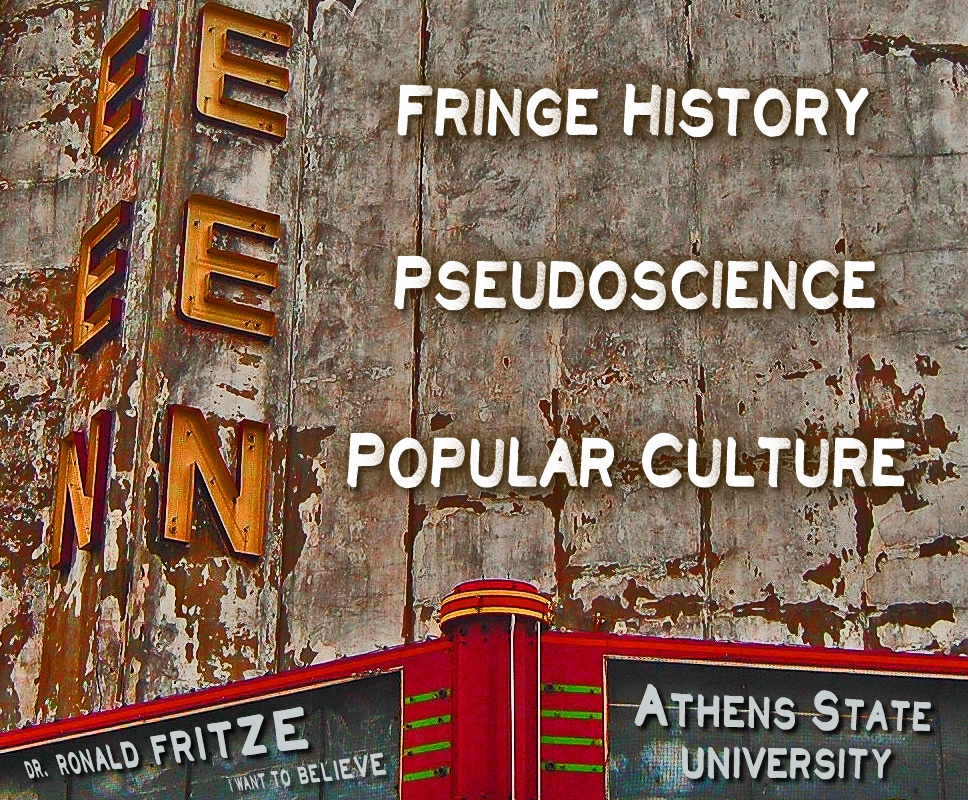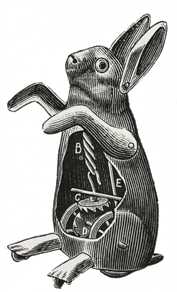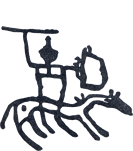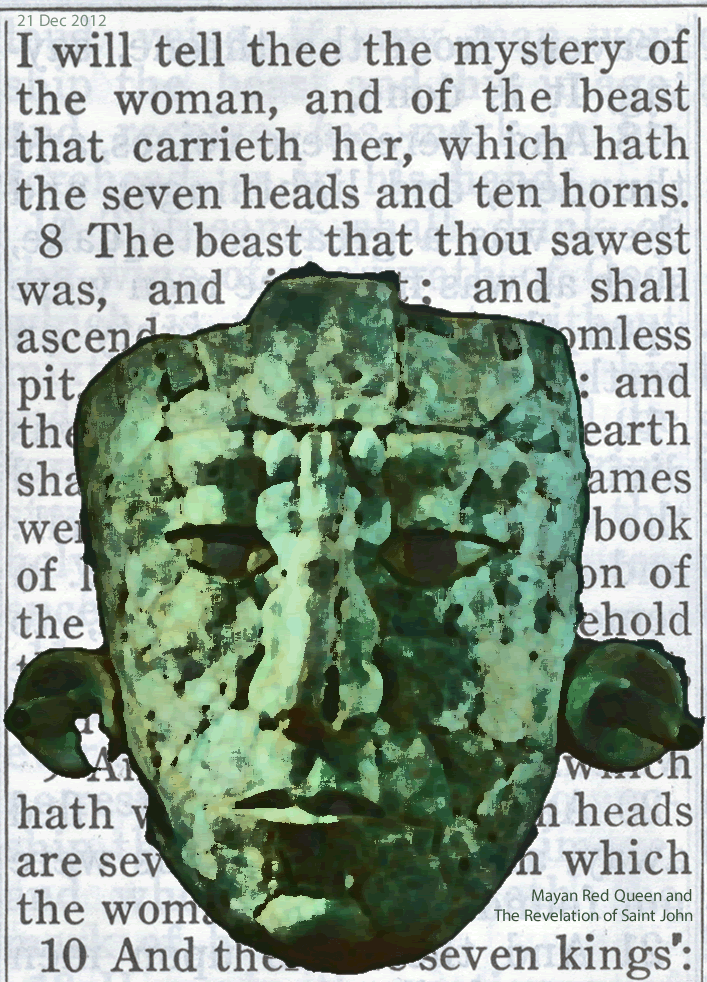
I Survived the Long Count. Did you?
The Maya Were Great Astronomers,
But the Apocalyptic End of the World
Belongs to another Culture, a Later Age.
It may end later, but I see no reason for its ending sooner.
This I mention not to assert when the time of the end shall be,
but to put a stop to the rash conjectures of fancifull men who are
frequently predicting the time of the end, & by doing so bring the
sacred prophesies into discredit as often as their predictions fail.
Christ comes as a thief in the night, & it is not for us to know
the times & seasons wch God hath put into his own breast.
— Isaac Newton
By Ronald Fritze
Posted on Thursday, March 14, 2013, from Athens, Alabama
I hope that none of you were too nervous or bothered as the Maya apocalypse approached on 21 December 2012. We are here, so somebody got it wrong. But what did they get wrong? Was it the date? There were people who suggested the actual year for the apocalypse was 2011, but obviously they were also wrong. Others suggested the date of the apocalypse was 23 December 2012. If they are right (and I am writing this essay on 22 December) we are not out of the woods yet. But if you are hearing this lecture or reading it as an essay, we made it safely.
Maya dates and numbers are complex and difficult to read definitively, so there is room for doubt and debate among scholars. What the 2012ologists got wrong was the idea that the ancient Maya actually predicted the end of the world in 2012. Or 2011. Or ever.
13.0.0.0.0 3114 BC 5126 Years 21 December 2012
Hundreds of books have been written about 2012 — most are very deficient when it comes to scientific and historical accuracy. The true believers of 2012 assert that the ancient Maya had a sacred calendar that showed that the end of time or the end of world would occur at the end of the great sequence of the Maya Long Count calendar, a date that can be expressed in Arabic numerals as 13.0.0.0.0. Keep in mind, Mayas did not count in tens like we do, they counted in twenties. The Long Count was one of several calendrical systems that the Maya used. Its count began in 3114 BC and the sequence consisted of 5126 years, which would end on 21 December 2012 or thereabouts. Long Count was basically a way for the Maya to give each date a unique notation like we do when we note that a day was 7 December 1941, the date of the attack on Pearl Harbor. This form of counting years was in use for several hundred years during the Classic Maya era, but it had gone out of use centuries before the arrival of the Spanish in Mesoamerica.
Scholars had long known about the various Maya calendars, but until the late 1980s Maya hieroglyphs remained undeciphered. Once the epigraphic revolution of being able to read Maya inscriptions commenced, knowledge of the Maya grew rapidly. Previously, scholars had depicted the Maya as master astronomers and mathematicians who led peaceful if somewhat dreamy lives studying the stars and doing math. They were the nerd civilization of ancient America.
Once scholars began translating the Maya inscriptions, they discovered that the Mayas were a culture of small, squabbling kingdoms of city-states, warlike and rather bloodthirsty. Unlike in Mexico or Peru, no Maya ruler ever managed to create a unifying empire out of the quarrelsome Maya kingdoms. At the same time, they were still extremely accomplished astronomers and mathematicians. The Long Count date of 21 December 2012 remained in play, but no end of the world significance was attached to it.

An Obscure Translation by Two Scholars in 1996
Gradually Grew into a Pop-Culture Sensation.
During the 1960s an inscribed monument, which was labeled Monument 6, was recovered from the archaeological site of El Tortuguero. The inscription remained untranslated until 1996, when a translation by the scholars Stephen Houston and David Stuart appeared in scholarly circles. Depending on how you read it, the inscription seemed to predict a great catastrophe or a great positive transformation on 21 December 2012. It seemed to predict the end of the world as we know it. When the Houston-Stuart translation became public knowledge, it gradually grew into a pop-culture sensation. The 2012 mania had begun.
Since then the abashed Houston and Stuart have retracted their original translation and presented a less apocalyptic one. But as the book by Matthew Restall and Amara Solari, 2012 and the end of the World: The Western Roots of the Maya Apocalypse shows, the 2012 mania has no real basis in the belief systems of the ancient Maya. The 2012 mania began with the translation of El Tortuguero Monument 6 and its subsequent misuse and misinterpretation.
The El Tortuguero inscription dates to the reign of the local King Jaguar, who ruled from 644-679 AD. At the time of its initial translation, the inscription was unique, but since then, more inscriptions have been found or translated. None contained any references that are remotely apocalyptic when it comes to 21 December 2012. The El Tortuguero inscription’s seeming doomsday prophecy is not supported by other Maya inscriptions. Restall and Solari point out:
- 1) The start date of the Long Count was 3114 BC, which was a completely arbitrary date that occurred thousands of years before the Maya created the Long Count.
- 2) There is a strong consensus among scholars that 21 December 2012 is the terminal date of the Long Count.
- 3) The Long Count was not the oldest Maya calendar. It was used during the Classic Maya era of sacred rulers or kings. As that form of political organization declined, so did the use of the Long Count. The last known Long Count date was calculated in 910 AD some 600 years before the arrival of the Spanish.
- 4) They also point out that the Maya do not manifest any belief that the world would be destroyed for all time on 21 December 2012. At the very least, the Maya thought that when that date arrived over 1000 years in the future, the calendar would simply be reset and a new cycle of 5126 years would begin. Maya did believe in periodic destructions of the world, but these were always followed by recreations or renewals. The world was never destroyed totally or permanently.
If Not the End of the World, Then What?
Maya society had a set of concerns, but the apocalyptic end of the world was not among them. Restall and Solari identify several issues of importance to the Maya.
- 1) They were concerned with the fertility of the earth and agricultural cycles. Not surprising: If the crops failed, they starved.
- 2) They saw the physical and supernatural worlds as being intertwined as one world — gods and men needed to cooperate.
- 3) Maya took a very local view of politics, which played out regionally. They viewed permanence of place in a local context.
- 4) Maya had a big concern about time and measuring its passage.
- 5) Maya had a strong sense of aesthetics concerning how things looked or should look. At the same time, they appear not to have had a concept of “art.”
- 6) The Maya had a great sense of humor and playfulness, despite the bloody nature of their wars.
Nowhere in Maya culture was there a concern about the end of the world. They did not have millenarian or apocalyptic concepts.
New Age Awareness + Maya Calendar = Apocalyptic Prophecy
So why the focus on the Maya and 2012? Maya scholars from the pre-decipherment era tended to emphasize the Mayas’ calendars along with their mysterious nature and great but unexplained significance to the Maya. Other things contributing to the focus on the Maya were:
- 1) From the 1970s onward, the decipherment of Maya hieroglyphics and other archaeological discoveries made the public more conscious of Maya civilization.
- 2) The translation of the El Tortuguero Monument 6 fused the Maya calendar to an apocalyptic prophecy from 1996 onward.
- 3) After 1996, the date of 21 December 2012 was getting closer and closer, which added suspense.
- 4) New Age advocates connected 2012 with their fascinataion with ancient wisdom and enlightenment.

It Crossed the Seas
With the Christians and Jews.
The fundamental problem with a Maya apocalypse is obvious. The true sources of apocalyptic and millenarian ideas are Christianity and Judaism, whose followers from Europe and the Mediterranean didn’t arrive in the Americas until after 1492. Restall and Solari see the beginning of the apocalyptic tradition in the prophet Daniel’s interpretation of King Nebuchadnezzar’s dream. Christians took up this Jewish prophecy and applied it to end-of-the-world predictions, such as those of the second century heretic Montanus of Phrygia.
Since that time there have been repeated attempts to date the end of the world. Each failure is either explained away as a miscalculation or allowed to slip silently into the backpages of history.
Apocalyptic ideas have great appeal to the poor and the dispossessed, often through purported secret knowledge and wisdom handed down by the ancients and then revealed to seekers and initiates. An early expression of the powerful allure of an order of the dispossessed was the appearance of the Gnostics, who sought to discover secret or hidden wisdom by turning away from the material world and searching for spiritual truths in an environment of personal poverty and devotion to the welfare of others. The rise of Gnosticism led to a widespread belief in the existence of secretly initiated adepts, who became the guardians of ancient wisdom. Some aspects of that wisdom concerned the apocalypse.
Other great purveyors of apocalyptic beliefs were the twelfth century theologian Joachim of Fiore and the fifteenth century religious leader Girolamo Savonarola (1452-1498). Another great believer in apocalyptic prophecy was St. Francis of Assisi (1182-1226), the founder of the Franciscan Order. In 1492 and through the sixteenth and seventeenth centuries, European society was permeated by apocalyptic and millenarian ideas. And the Franciscan Order played a huge role in converting the Native Americans to Christianity, which it saw as a fulfillment of biblical prophecies about the end of the world.
Franciscan Doom Struck the Aztecs, Too.
One of the enduring myths of the Spanish conquest of the Americas was that the Aztec emperor Montezuma believed that Cortes was the god Quetzalcoatl returning to take back his kingdom. Hence Montezuma did not resist the Spanish invasion. Restall and Solari show that this interpretation has no basis in Aztec beliefs. Instead, it was the Franciscan missionaries who planted this image of Cortes in the minds of their converts and subsequent generations of people writing and reading about the conquest of Mexico. This falsehood required the Aztec culture to have an apocalyptic strain of prophecy that really did not exist at all.
Franciscan missionaries such as Diego de Landa brought apocalyptic ideas to
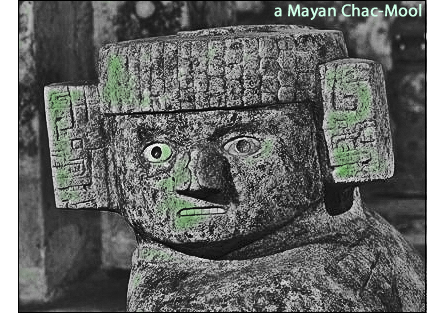 the Maya culture as well. Maya people from the mid-sixteenth century onward began to incorporate Christian theology and western apocalyptic ideas into their existing traditional beliefs. Springing from this hodgepodge doctrine were the enigmatic and long secret books known as Popul Vuh and Chilam Balam. Some 2012ologists and New Agers treat these works as genuine transmissions of ancient Maya religious beliefs. Instead, they are prime examples of late colonial Maya adaptions and appropriations of Christian concepts.
the Maya culture as well. Maya people from the mid-sixteenth century onward began to incorporate Christian theology and western apocalyptic ideas into their existing traditional beliefs. Springing from this hodgepodge doctrine were the enigmatic and long secret books known as Popul Vuh and Chilam Balam. Some 2012ologists and New Agers treat these works as genuine transmissions of ancient Maya religious beliefs. Instead, they are prime examples of late colonial Maya adaptions and appropriations of Christian concepts.
Given what they had gone through with the Spanish conquest, the Maya had every reason to adopt an apocalyptic view of the world. Restall and Solari convincingly demonstrate how these late Maya sources have been consistently misinterpreted and misused by New Agers and 2012ologists. Colonial and post-colonial Maya apocalypticism survived into the twentieth century, died down for a long while, and then rose again in our present day pop-climate, ever eager to embrace the next transitory millennial idea.
Restall and Solari point out their conclusions on pp. 114-115 of 2012 and the End of the World. One: The world won’t end in 2012. Two: The Maya never predicted that it would. Three: Millenarian ideas entered the Maya world through the work of Franciscan friars from Europe. Four: Europe, not Mesoamerica, invented and encouraged apocalyptic worldviews.
Some Are Ignorant, Others Seek Simplicity,
Many Are Just Looking for the Comfort of Belonging.
The authors ask: Why do so many people believe in ideas like Maya 2012? Ideas like 2012, they observe, can be both optimistic and pessimistic in their application. Another point: “Belief offers an explanation without need for evidence. It offers a simple solution to life’s complexities, a source of meaning and hope in a world of cruel whimsy and chaos.” They assert that another aspect of this phenomenon “is that people are ignorant.” By committing to a specific belief, a person immediately gains membership in a group and thus gains the comfort of belonging. In this light, skepticism is a lonely activity. Millenarianism and chiliasm are crowd friendly ideas, deeply engrained in Western Culture, particularly in North America.
Restall and Solari also offer some explanations for the appeal of the Maya in the phenomenon of millenarianism and New Age thinking.
- 1) Since the early nineteenth century, the Maya have been viewed as a mysterious people. They supposedly possess an ancient, secret wisdom along the same lines as the Egyptians.
- 2) Maya doomsday prophecy seems to have a scientific basis, given the great astronomical and mathematical knowledge of the Egyptians.
- 3) The connection between the Maya calendar and astronomy manifests itself as astronomical millenarianism of cyclic catastrophes such as asteroid collisions with the earth.
- 4) Western civilization considers the apocalypse to be a visual phenomenon. It is something to be seen. Maya hieroglyphs and inscriptions, along with the Aztec calendar stones, create a visual image of the apocalypse, even if the image is really being misinterpreted.
The authors conclude by pointing out that millenarian ideas always manage to survive their false predictions.
But let’s not end on an academic or scientific note. Whenever someone predicts the end of the world on a specific date, we ought to remember the words of Jesus Christ about the end of the world:
But about that day and hour no one knows,
neither the angels of heaven, nor the Son,
but only the Father.
Matthew 24:36

